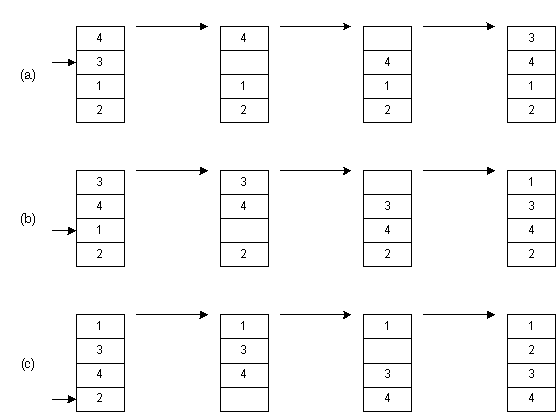
Insertion Sort
One of the simplest methods to sort an array is an insertion sort.
An example of an insertion sort occurs in everyday
life while playing cards. To sort the cards in your hand you
extract a card, shift the remaining cards, and then insert the
extracted card in the correct place. This process is repeated
until all the cards are in the correct sequence. Both average
and worst-case time is O(n2).
For further reading, consult
Knuth [1998].
Theory
Starting near the top of the array in Figure 2-1(a),
we extract the 3.
Then the above elements are
shifted down until we find the correct place to insert the 3.
This process repeats in Figure 2-1(b) with the next number.
Finally, in Figure 2-1(c),
we complete the sort by inserting 2 in the
correct place.
Assuming there are n elements in the array, we must index
through n - 1 entries. For each entry, we may need to examine
and shift up to n - 1 other entries, resulting in a
O(n2) algorithm.
The insertion sort is an in-place sort. That is, we sort the
array in-place. No extra memory is required. The insertion sort
is also a stable sort. Stable sorts retain the original
ordering of keys when identical keys are present in the input
data.
Implementation
An
ANSI-C implementation
for insertion sort is included.
Typedef T and comparison operator compGT
should be altered to reflect the data stored in the table.
